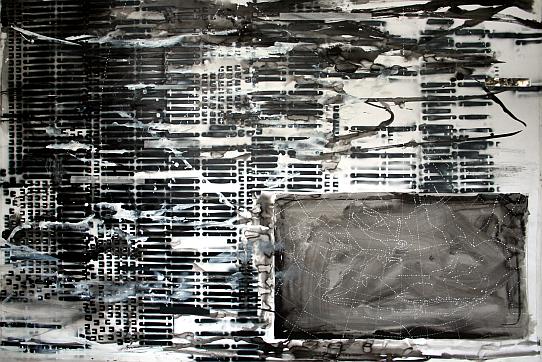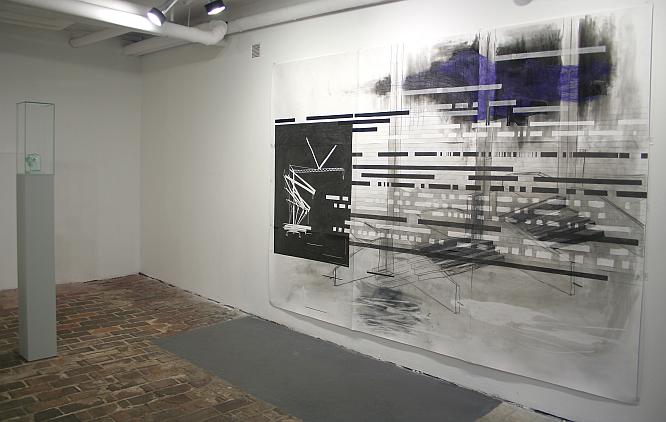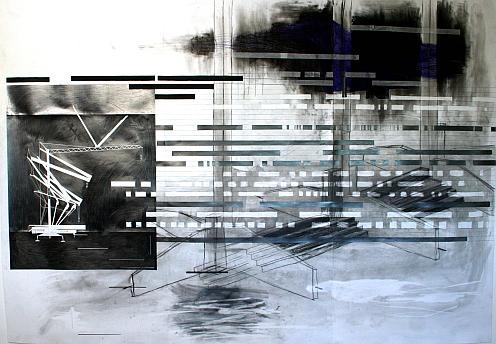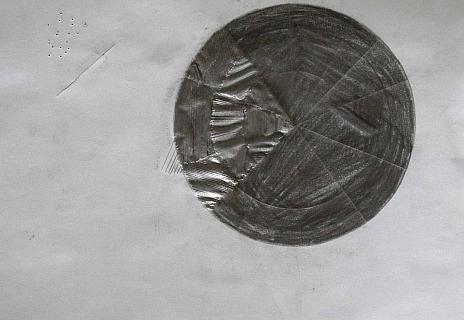Out Of This World
The exhibition works deal with materiality and imagination, the cosmological and the archaeological, materials that reference outer space, and at the same time engage with states of un-Earthing of the forgotten, the found, the regenerative, or their poetics that can be regenerative and/or expressed anew. They reveal hidden traces of what once in existence but now been transformed into something else. In another sense the works in the exhibition express search and research, a finding out and a redirecting of those finds. With Schepers his concerns have been motivated by his interest in the nineteenth century GermanTexan thinker Ernst Kapp and his theory of tools as 'organic projections'. These concern Kapp's argument is that engineering and machine (tool) development is always born as utilisable extensions of the human body.ii Linking this idea to his researches into systems of continuous motility and manufacture, the artist questions the criteria of utility itself, the socio-economic criteria of 'functional use' as distinct from its creative and aesthetic potential. Schepers drawings are therefore as much a form of dialectical research (on human energy as power and its dislocations) as they are a graphic representation, less machines of the imagination as much as possessing the potential of 're-imagining machines'. The idea of journeying, particularly in reference to the navigable motility (the biological analogy is intended) of ships (containers and containment) at sea also play their part in his recent work, and his conceptualisations (often sculptural) pick up on issues of collaboration and differential mobility.
Mark Gisbourne, Out of this World, Haus am Lützowplatz, 2014





.jpg)
.jpg)

.jpg)

.jpg)


.jpg)